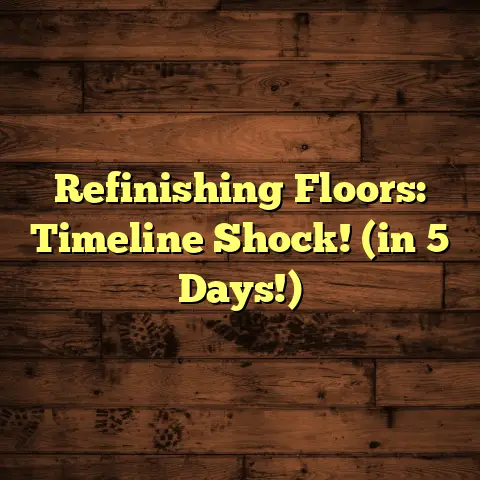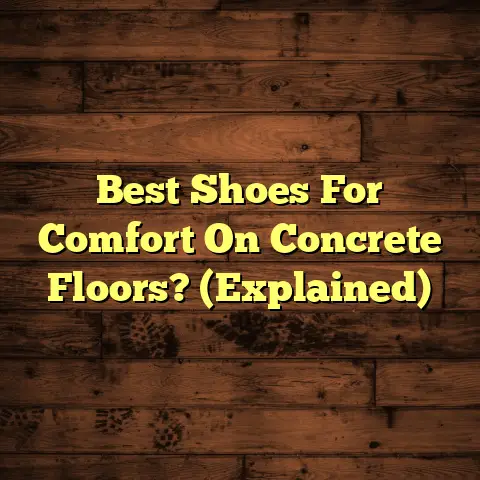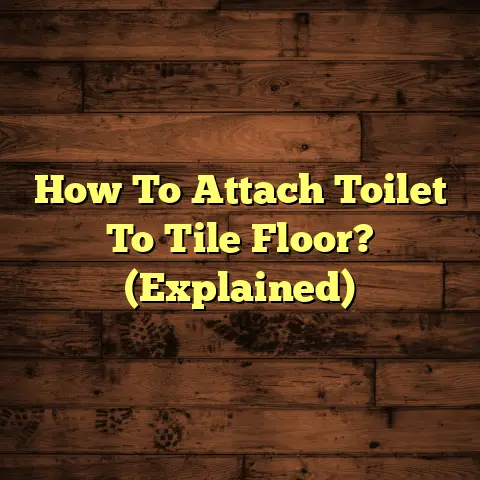Badminton Court Flooring Cost (Explained)
Badminton Court Flooring Cost (Explained)
When it comes to outfitting a badminton court, choosing the right flooring is essential. Not only does the flooring impact the quality of play, but it also plays a significant role in the overall budget. This comprehensive guide will break down the costs associated with installing hardwood flooring in a badminton court, as well as considerations and comparisons with other flooring types.
Overview of Major Cost Factors
1. Area Size
The size of the badminton court is one of the most significant factors in determining flooring costs. A standard badminton court measures 20 feet wide and 44 feet long, making the total area approximately 880 square feet. However, if you are considering additional space for sidelines or spectator areas, this will increase your material and installation costs.
2. Hardwood Type
The type of hardwood selected will significantly influence costs. Common options include:
- Maple: Widely used for sports courts due to its durability and shock absorption. Cost can range from $3 to $8 per square foot.
- Oak: Known for its strength and aesthetic appeal but may not be as shock-absorbent as maple. Costs range from $4 to $10 per square foot.
- Cherry and Walnut: Considered premium options due to their rich color and grain patterns, prices can range from $6 to $15 per square foot.
3. Labor
Labor costs can vary significantly based on location, complexity of the installation, and experience of the workforce. Typically, professional installation can add an additional $2 to $5 per square foot to the total cost.
4. Additional Considerations
- Floor Removal: If there is existing flooring, removal can add $1 to $3 per square foot.
- Subfloor Replacement: If the subfloor is damaged or inadequate, replacing it can cost an additional $1 to $2 per square foot.
- Material Grade: Higher-grade woods with fewer knots and defects will cost more.
- Installation Type: Custom designs such as herringbone or parquet may require additional labor and expertise, increasing costs.
Detailed Cost Breakdown
| Cost Factor | Low Estimate | High Estimate |
|---|---|---|
| Hardwood Material | $3/sq ft | $15/sq ft |
| Installation Labor | $2/sq ft | $5/sq ft |
| Floor Removal | $1/sq ft | $3/sq ft |
| Subfloor Replacement | $1/sq ft | $2/sq ft |
| Total Estimated Cost | $7/sq ft | $25/sq ft |
For a standard badminton court (880 sq ft), total costs could range from approximately $6,160 to $22,000.
Comparing Hardwood vs Alternative Flooring Options
When considering flooring for a badminton court, hardwood is often compared with other materials such as laminate, vinyl, and carpet.
Laminate
- Cost: Generally cheaper than hardwood, ranging from $1 to $3 per square foot.
- Durability: While it can mimic wood, it does not provide the same level of performance for sports.
Vinyl
- Cost: Ranges from $2 to $5 per square foot.
- Durability: Offers good moisture resistance and can be easier to maintain but lacks the aesthetic appeal of hardwood.
Carpet
- Cost: Generally ranges from $2 to $6 per square foot.
- Durability: Not suitable for sports courts due to lack of support and wear resistance.
Signs That Hardwood Floors Need Replacement
Before deciding on installation or refinishing, it’s essential to evaluate the current state of your hardwood flooring. Signs that replacement may be necessary include:
- Deep Scratches and Gouges: If the damage penetrates deeply into the wood.
- Warping or Cupping: Often caused by moisture issues.
- Extensive Wear Patterns: Visible wear in high-traffic areas that cannot be sanded out.
Refinishing vs. Replacing
When faced with worn hardwood floors, consider:
- Refinishing: More cost-effective if the wood is still structurally sound. Costs for refinishing typically range from $1.50 to $4 per square foot.
- Replacement: Necessary if the floor is severely damaged or beyond repair.
Pros and Cons of Hardwood Flooring
Pros
- Aesthetic Appeal: Adds warmth and elegance to any space.
- Durability: With proper maintenance, hardwood can last decades.
- Value Addition: Increases property value.
Cons
- Cost: Higher initial investment compared to other options.
- Maintenance: Requires regular upkeep, including cleaning and refinishing.
Professional Installation vs DIY
Cost Differences
Professional installation generally ranges from $2 to $5 per square foot, while DIY installation may save on labor costs but requires tools and skills that can lead to additional expenses if done incorrectly.
Tools Required
If opting for DIY, necessary tools include:
- Flooring nailer
- Circular saw
- Trowel
- Measuring tape
Skills Required
Proper installation requires knowledge of subfloor preparation, moisture control, and layout planning.
Questions to Ask Hardwood Flooring Contractors
When hiring a contractor, consider asking:
- What types of hardwood do you recommend for a badminton court?
- Can you provide references from previous installations?
- What is your estimated timeline for completion?
- Are there warranties available for materials and installation?
- How do you handle unexpected issues during installation?
Care and Maintenance Tips
To maximize the longevity of hardwood flooring in a badminton court:
- Regular Cleaning: Sweep or vacuum regularly to remove debris.
- Avoid Excess Moisture: Keep humidity levels consistent.
- Use Mats: Place mats at entrances to reduce dirt accumulation.
- Refinish When Needed: Schedule refinishing every few years depending on wear.
Conclusion
Investing in hardwood flooring for a badminton court involves careful consideration of various factors that impact costs. By understanding these elements and comparing options, you can make an informed decision that balances quality with your budgetary constraints. Whether you choose professional installation or opt for a DIY approach, maintaining your hardwood will ensure its beauty and functionality for years to come.





